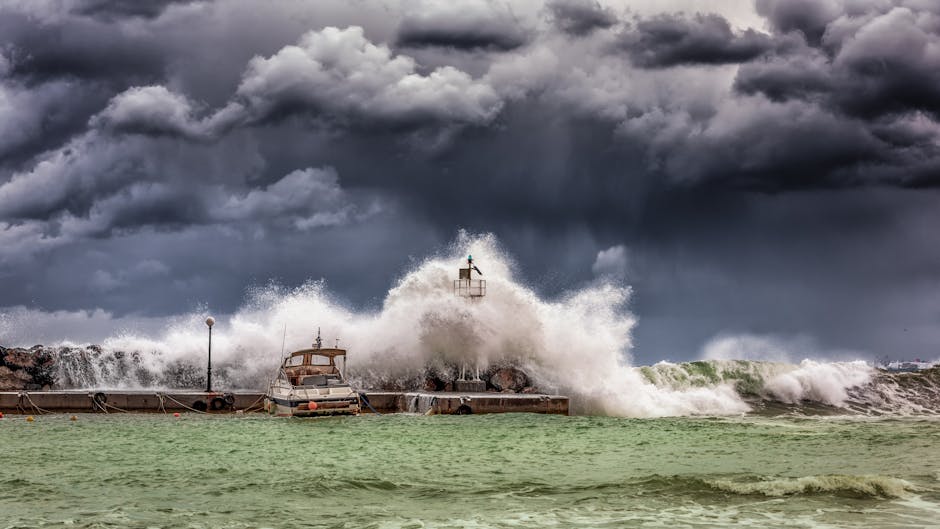Preparing for Hurricane Season: Why Monitoring Wind Speeds is Crucial
As the skies darken and the winds gather strength, the anticipation of hurricane season sets in. Understanding the power of nature and the vital importance of monitoring wind speeds can be the difference between safety and disaster. Dive into the critical reasons why keeping an eye on the winds is not only a scientific pursuit but a necessary part of our seasonal preparedness.
The Basics of Hurricane Formation and Wind Speed
Understanding how hurricanes form is essential to comprehending the critical role of wind speeds in their development. Warm ocean waters and atmospheric instability combine to create these powerful storms, where wind speeds play a pivotal role in their formation and eventual intensity. The energy from the warm sea surface is the engine that fuels the storm, with wind speeds acting as both a product and a propellant of this complex natural phenomenon.
Moreover, the correlation between wind speeds and the release of latent heat from condensing water vapor is a key factor in the intensification of hurricanes. This process not only escalates the storm’s ferocity but also determines its potential for destruction. Hence, tracking these speeds is crucial for understanding a hurricane’s lifecycle and predicting its path and intensity.
How Wind Speeds Determine Hurricane Categories
The Saffir-Simpson Hurricane Wind Scale categorizes storms into five categories based on their maximum sustained wind speeds. This scale is a vital tool for both meteorologists and the public to assess the potential damage and necessary preparations for an incoming storm. Each increase in category signals a significant jump in the destructive power of the hurricane, highlighting the exponential relationship between wind speed and storm damage.
For example, a Category 1 hurricane, with wind speeds of 74-95 mph, can cause damage to roofs, siding, and trees. In contrast, a Category 5 hurricane, with wind speeds exceeding 157 mph, can lead to catastrophic damage, including the complete destruction of homes and large-scale area evacuations. This emphasizes why monitoring changes in wind speeds is not just scientific diligence but a critical safety measure.
Monitoring Wind Speeds: Tools and Techniques
Advanced technology has provided meteorologists and disaster preparedness agencies with sophisticated tools to monitor wind speeds with remarkable accuracy. Satellites, Doppler radar systems, and anemometers are at the forefront of these efforts, each playing a unique role in providing real-time data essential for timely warnings and evacuations.
Satellites offer a bird’s-eye view of storm formations, tracking their movement and intensity over vast ocean areas. Doppler radar, on the other hand, provides detailed information about a storm’s structure and intensity, including wind speeds, by bouncing radio waves off the moving rain droplets within the hurricane. Anemometers, both stationary at weather stations and mobile units, directly measure the wind speed at specific locations, offering ground truth data that complements satellite and radar observations.
The Impact of Wind Speed on Emergency Preparedness
Accurate wind speed monitoring is indispensable for emergency preparedness plans. Local governments and emergency services rely on this data to make critical decisions, including when to issue evacuation orders. The lead time provided by accurate forecasting allows for more effective mobilization of resources, ensuring that shelters are adequately prepared and evacuation routes are clearly communicated to residents.
Moreover, understanding the potential impact of varying wind speeds on infrastructure and utilities guides communities in reinforcing buildings, securing loose items, and planning for possible power outages. This proactive approach not only minimizes property damage but can also save lives, underscoring the life-saving potential of diligent wind speed monitoring and emergency planning.
Case Studies: Successful Hurricane Predictions and Outcomes
Historical hurricanes offer invaluable lessons on the effectiveness of wind speed monitoring and predictions. For instance, the accurate prediction of Hurricane Katrina’s path and intensity allowed for unprecedented evacuations, potentially saving thousands of lives despite the tragic outcomes. Such case studies underscore the critical role of timely and accurate wind speed data in disaster response and management.
Closing Thoughts: The Importance of Community and Preparation
Ultimately, the collective efforts in monitoring wind speeds and preparing for hurricanes underscore the broader themes of community resilience and the importance of scientific engagement. The shared experiences of facing these formidable natural challenges highlight the strength found in preparation, education, and cooperation. As communities worldwide brace for future storms, the lessons learned and the strategies developed from monitoring wind speeds will remain vital components of our collective resilience.
Harnessing Knowledge for Safety
Monitoring wind speeds isn’t just about data collection; it’s a crucial part of safeguarding communities and ensuring the minimum possible impact when a hurricane strikes. As technology and methods continue to evolve, so does our understanding and capability to predict and prepare for these mighty storms. Ultimately, the act of monitoring wind speeds symbolizes our respect for nature’s power and our collective resolve to protect and persevere through the challenges it presents.

